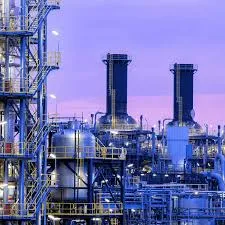
Nov . 05, 2024 19:32 Back to list
high pressure boilers pdf
High Pressure Boilers An Overview
High pressure boilers are integral components in various industrial applications, facilitating the generation of steam needed for production processes. These boilers operate at pressures exceeding 15 psi (pounds per square inch) and are utilized in power generation, manufacturing, and heating applications. Understanding the design, operation, and safety considerations of high pressure boilers is crucial for engineers and operators alike.
Principle of Operation
The fundamental principle behind high pressure boilers is similar to that of standard boilers - they convert water into steam. The process begins with water being heated in a pressure vessel, where it absorbs energy typically generated from the combustion of fuels such as natural gas, oil, or coal. As the water temperature rises, it transforms into steam, which can then be directed to power turbines or used for heating in industrial processes.
High pressure boilers are classified into two main types water-tube boilers and fire-tube boilers. Water-tube boilers feature water-filled tubes that are heated externally by combustion gases, allowing for efficient heat transfer and high steam production. On the other hand, fire-tube boilers consist of combustion gases passing through tubes submerged in water, where the heat exchanged generates steam. While fire-tube boilers are generally easier to operate and maintain, water-tube boilers are favored for their ability to handle high pressures and large volumes of steam.
Applications
High pressure boilers are widely used across various industries. In the power generation sector, they are pivotal in producing steam that drives turbines, generating electricity for the grid. Similarly, in the manufacturing sector, these boilers provide necessary steam for processes like distillation, sterilization, and chemical reactions.
high pressure boilers pdf

In addition to industrial use, high pressure boilers play a vital role in district heating systems, supplying steam for space heating in urban areas. Their versatility and efficiency make them essential for meeting energy demands while adhering to environmental regulations.
Safety Considerations
Due to the nature of their operation, high pressure boilers come with significant safety considerations. The dangers associated with high pressure steam include the risk of explosions, scalding, and equipment failure. To mitigate these risks, strict regulations and standards are enforced, requiring regular inspections, maintenance, and adherence to safety protocols.
Key safety devices include pressure relief valves, which release steam when pressures exceed safe limits, and water level indicators, which prevent the boiler from running dry. Operators must also be trained in emergency procedures to effectively respond to any incidents that may arise.
Conclusion
High pressure boilers are crucial assets in various industrial sectors, efficiently generating steam under high-pressure conditions for diverse applications. Their design, operation, and safety measures require careful consideration to ensure optimal performance and safety. As industries continue to evolve and energy demands increase, the importance of high pressure boilers will persist, underlining the need for ongoing innovation and adherence to safety standards. Understanding their complexities is essential for anyone involved in the operation and maintenance of these powerful systems, ultimately contributing to the efficiency and safety of industrial processes.
-
High-Efficiency Commercial Oil Fired Steam Boiler for Industry
NewsJul.30,2025
-
High-Efficiency Biomass Fired Thermal Oil Boiler Solutions
NewsJul.30,2025
-
High Efficiency Gas Fired Thermal Oil Boiler for Industrial Heating
NewsJul.29,2025
-
High-Efficiency Gas Fired Hot Water Boiler for Sale – Reliable & Affordable
NewsJul.29,2025
-
High Efficiency Biomass Fired Hot Water Boiler for Industrial and Commercial Use
NewsJul.29,2025
-
High-Efficiency Biomass Fired Hot Water Boiler for Industrial Use
NewsJul.28,2025
Related PRODUCTS






















